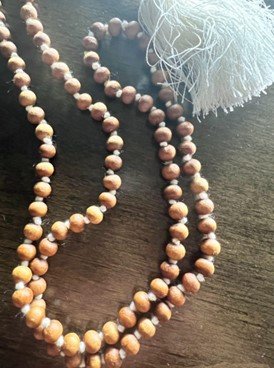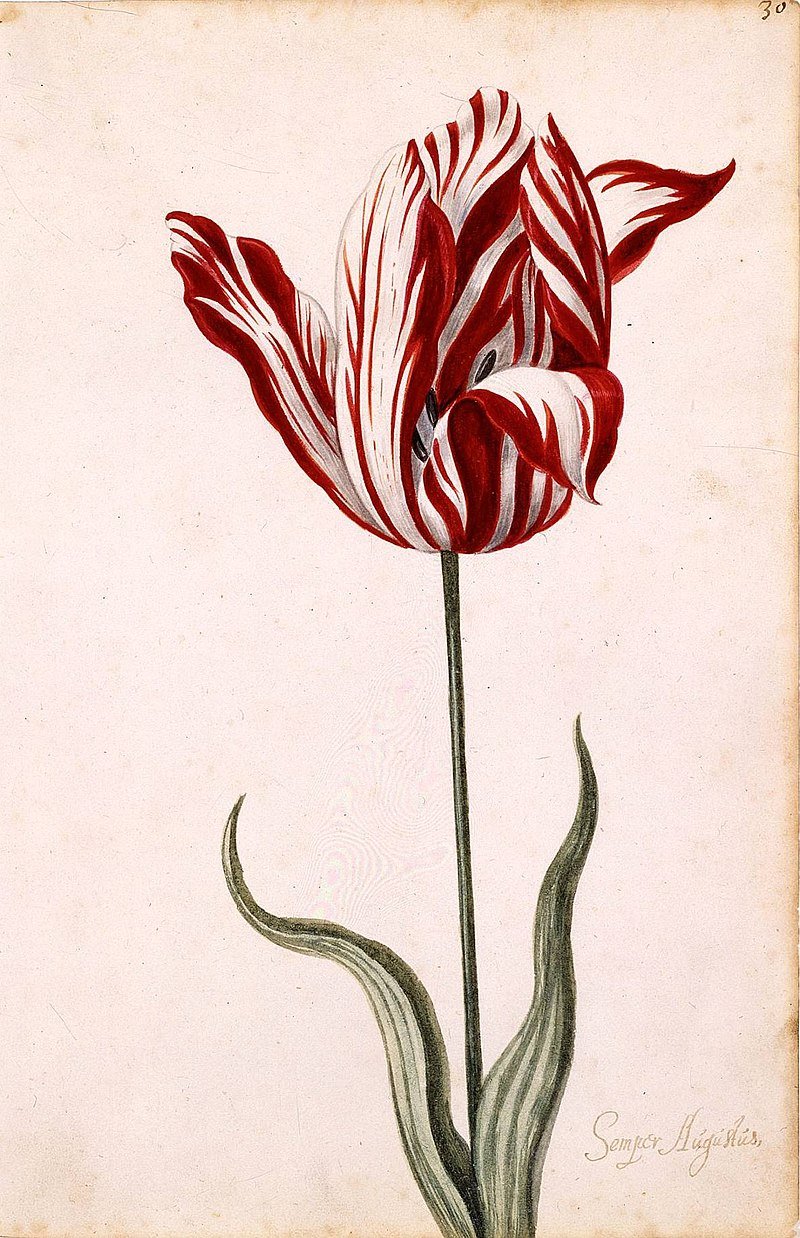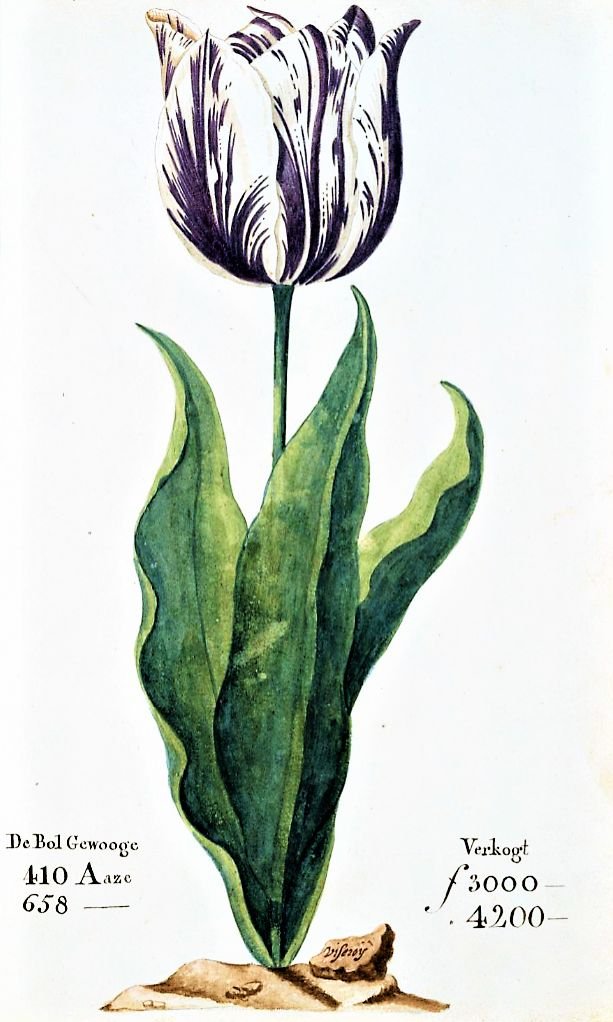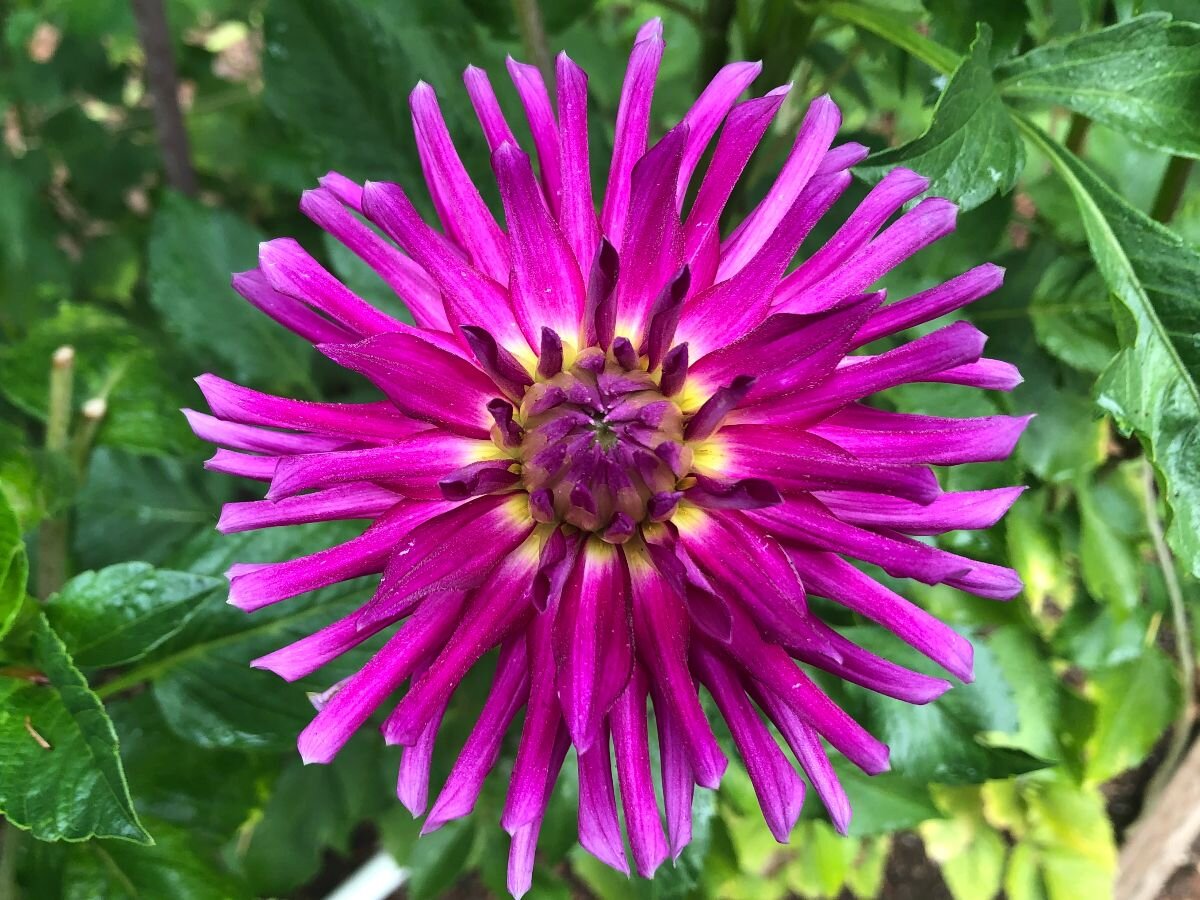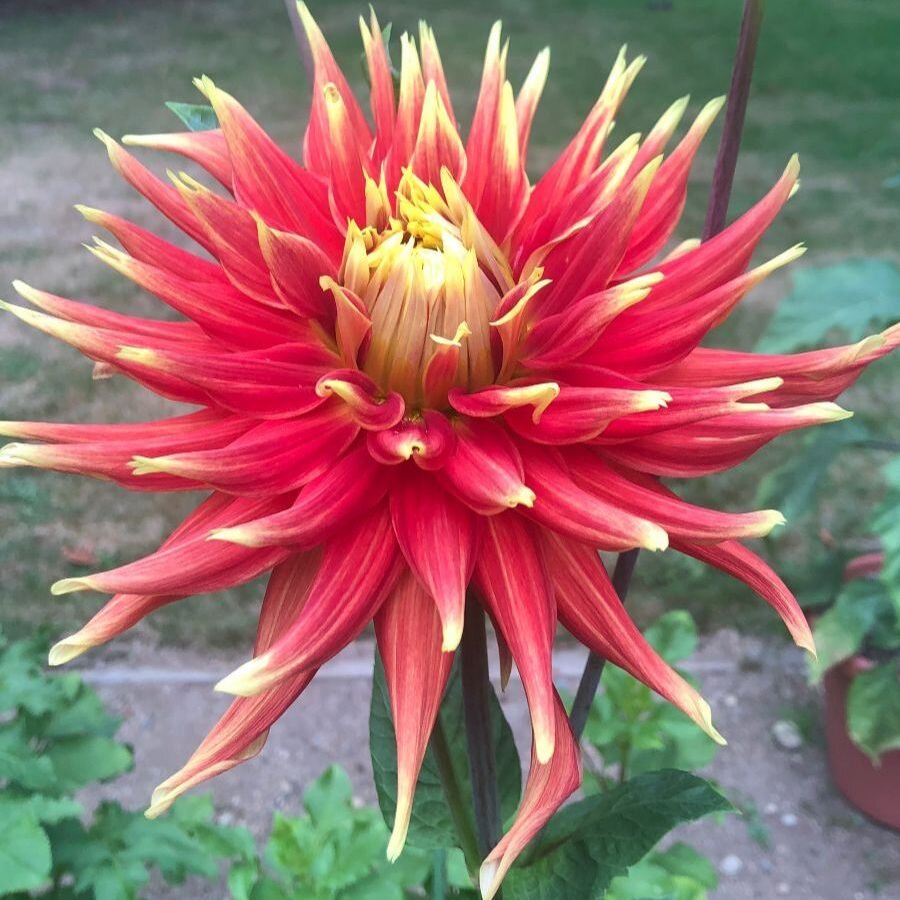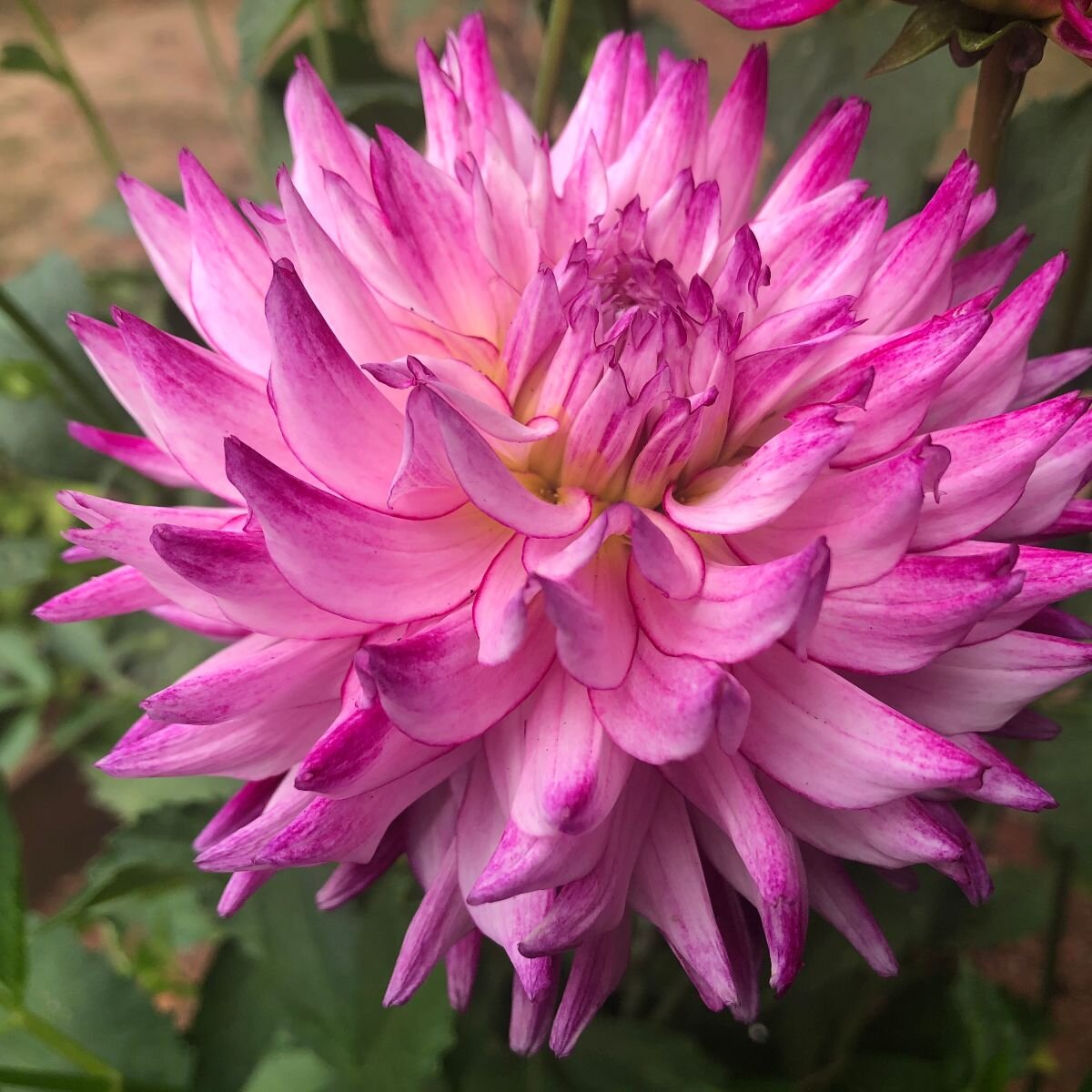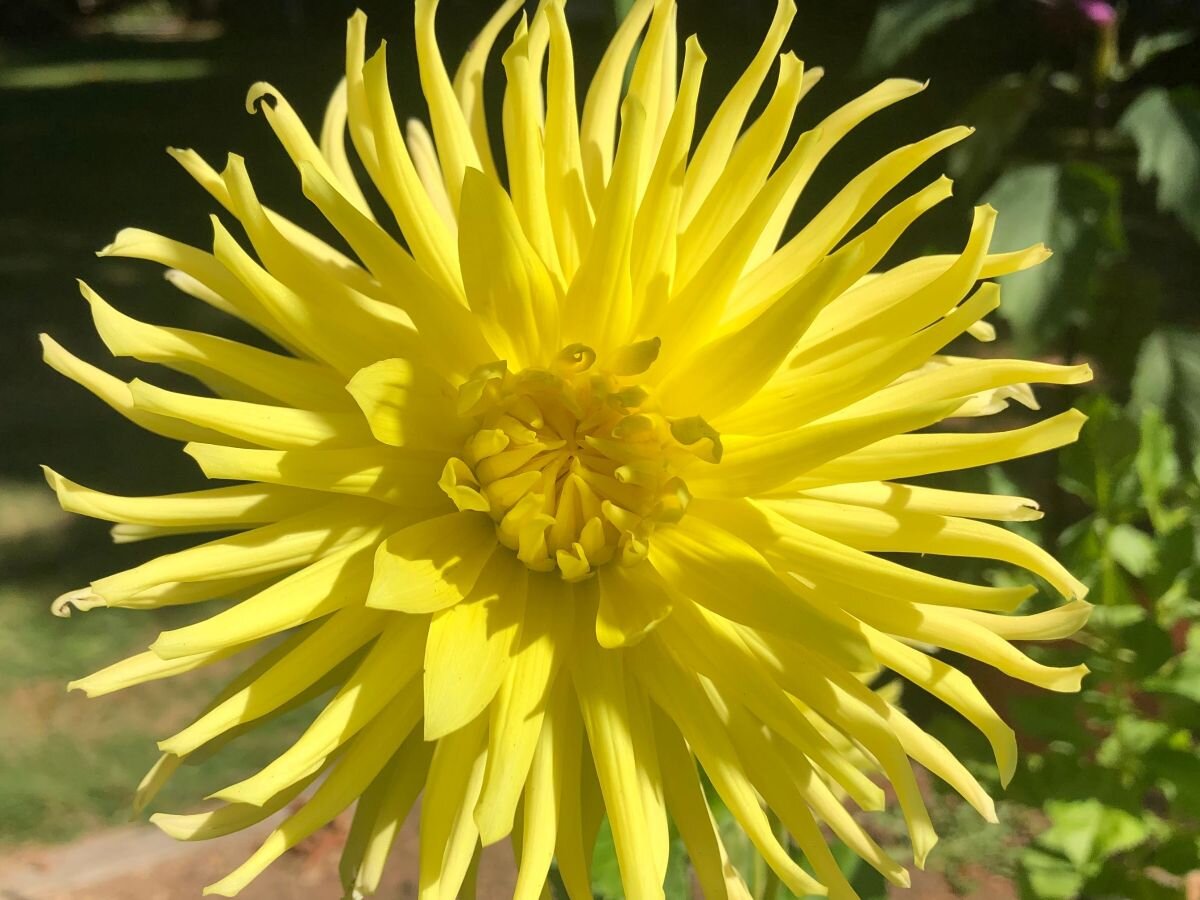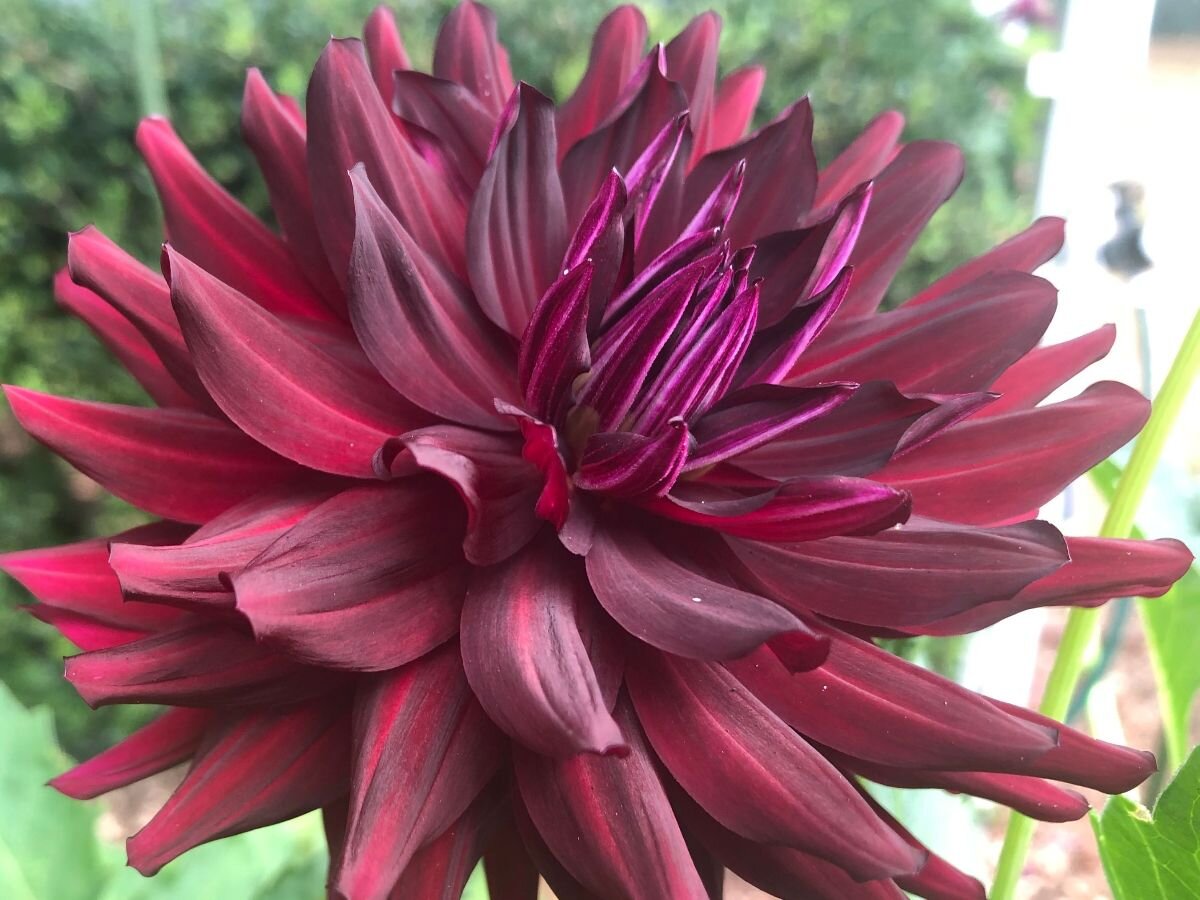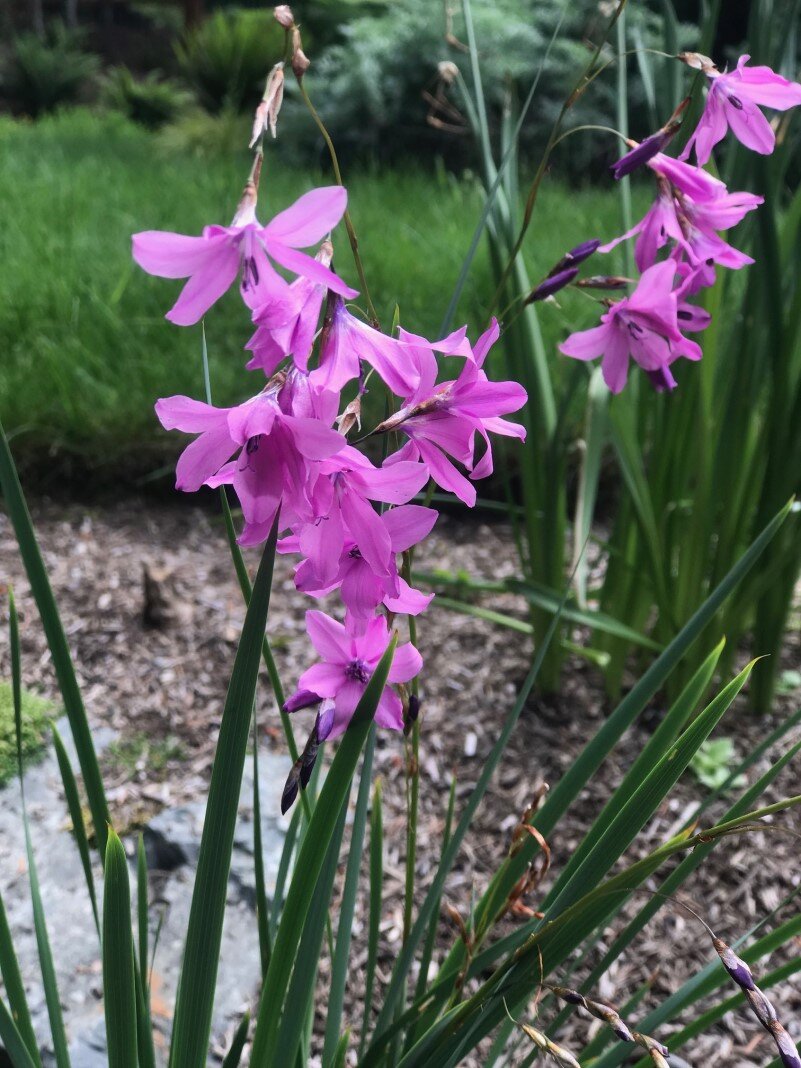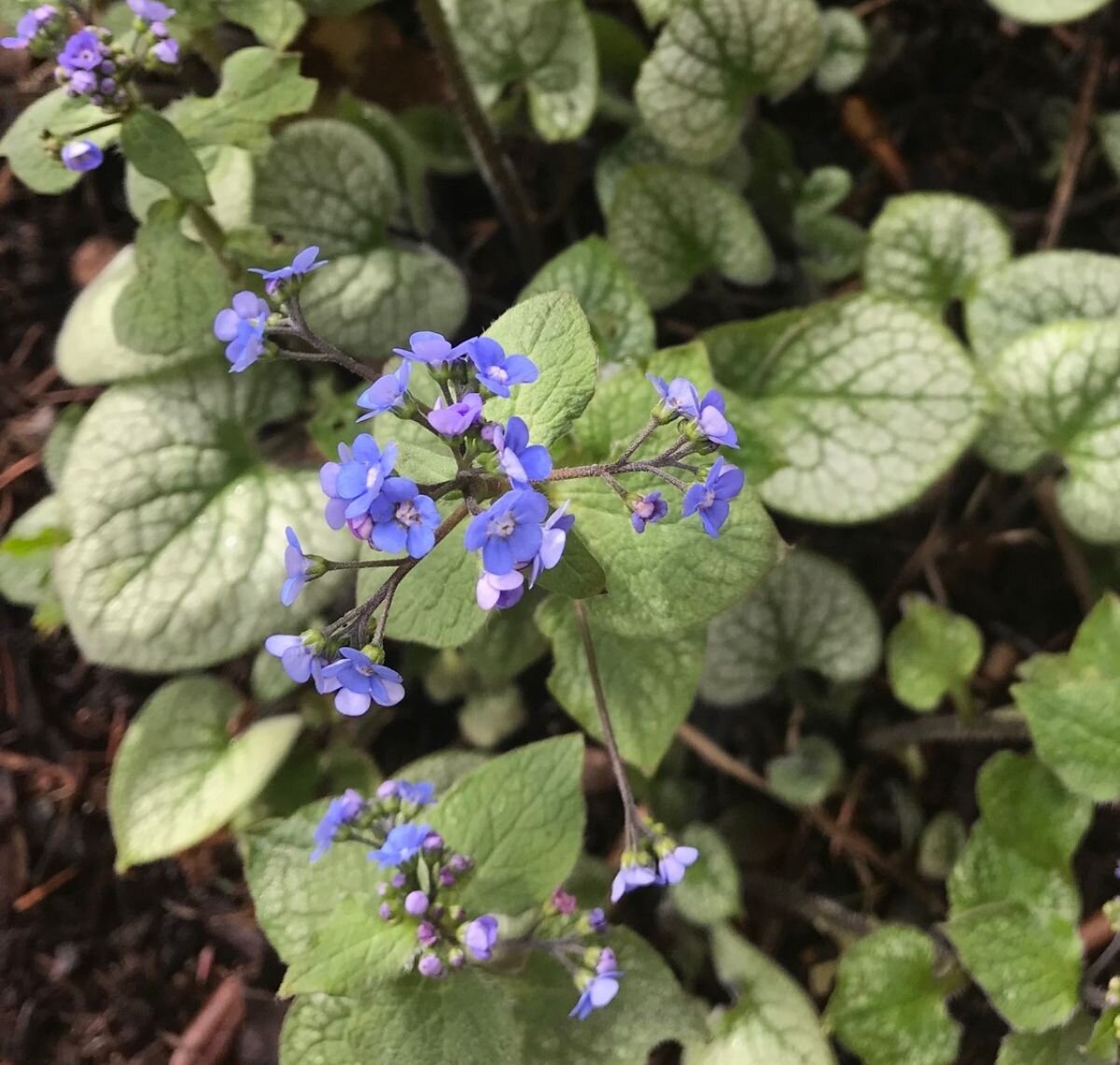
ARCHIVES
Featured Plant: Ocimum spp: Basil by Anita Waghani & Laura Matter, Seattle Tilth
This year as you plant your tasty tomatoes in the sunniest spots in your garden beds, leave a little bit of space in the sun for the king of summer: Ocimum basilicum, or basil. This tasty herb has quite a history in culinary circles, medicinally and in folklore from around the world.
Originally believed to have come from Asia and Africa to Greece in Alexander the Great’s time (circa 340 BC), it has since traveled the world and become a beloved part of many different cultures’ meals. Who hasn’t enjoyed the deliciousness of Pasta con Pesto or a Thai curry that is steeped in fresh basil or a soothing, healing cup of tulsi ginger chai?
Interestingly, basil has been associated by different cultures with conflicting emotions (hatred and love), the ability to both protect against the danger and enhance the breeding potential of scorpions and the strength to ward off evil or, conversely, the ability to encourage verbal ranting when planting it to have a successful growing season. In some sense, this makes it a well-rounded herb, adapted to all contingencies of human whim and extravagance.
According to the WIKI website “Witchipedia”, basil can enhance astral projection or even assist your ride on a flying broom. Make sure to save a little bit of basil for Halloween night!
For financial prosperity, try tucking a fragrant basil leaf into your wallet or back pocket — at the very least, you will enjoy the smell.
However you choose to assign your loyalty to basil, be sure to learn about this plant’s needs so you can grow it successfully.
Full of Flavors
Chemically speaking, basil has three main flavor profiles derived from different compounds in the plant: sweet or anise-like, floral and spicy or clove-like. Basil also boasts rose, thyme, lemon and camphor to its profile. No wonder we are so devoted!
There are many different cultivars of our most familiar sweet basil, O. basilicum, including ones with purple leaves, ruffled leaves, small and large leaves. Thai basil is a purple-stemmed and green-leaved variety, with a more upright and sturdy profile than the more-familiar Italian varieties.
Holy basil, Ocimum tenuiflorum (previously known as O. sanctum), has a devoted following of its own, being closely entwined with the complicated love story of Vishnu and Tulasi in Hindu lore. My earliest memory of tulsi (holy basil) comes from playing with my grandma’s tulsi beads necklace, called Kanthi, when I was four. On my travels recently I was fortunate to visit Tanshikar, a working spice farm stewarded by Chinmay and Gauri. The picture is of the tulsi that is planted in the center courtyard of their beautiful ecological home. Gauri starts her day by first worshiping the plant. Chinmay mentioned, “Having this plant inside their home cleans air and infuses it with oxygen 24/7 during the day through photosynthesis and at night by a process called CAM (Crassulasian Acid Metabolism).” Holy basil is used for religious and medicinal purposes and is often brewed as a restorative relaxing tea.
There are different types of tulsi: Rama green leaf (mellow tasting), Krishna purple leaf (peppery), Vana wild variety and Kapoor heavy flowered (pollinator friendly). I have used them interchangeably in the teas, though the flavors vary a bit.
The classic pesto choice is either Italian large leaf or Genovese basil. Thai basil is best for a green curry dish or other spicy and warming dishes. All types of basil belong to the mint family (Lamiaceae) and are recognizable as such by their obviously squared stems. They are grown as an annual, and because they are not tolerant of cold soil and weather, you must wait until the “queen of summer” (tulsi) has arrived to receive her king (sweet basil). The king and queen of summer are a natural pair in the summer garden.
In Your Garden
Provide basil with well-draining and healthy soil in a sunny space. Plant it on a cool morning, and water it well after.
If you purchase a pot of basil with many plants growing in one pot, take the time to separate them, since each seedling will make one large basil plant at maturity. Check it every few days after planting to make sure it does not dry completely out as it adjusts to its new life in your garden. Apply a dilute seaweed fertilizer for a strong and sturdy plant. These liquid kelp-based products can be added to the watering bucket weekly.
Because basil is an annual, your plant will make attempts all summer long to go to flower and then to seed. It is crucial to pinch out the flowers as they appear on the tips of the branches to prevent them from completing their reproductive goal. Once seeded, the plant loses flavor and will decline. Use the trimmings as a flavor enhancer in your iced tea or as a little spice for your dinner salad.
Pinching the flower tops or even taking a snip a few leaf pairs down the stem will also create a bushier plant, with more branches to harvest later. A good strategy is to continue to prune all summer long this way and then pull the whole plant for harvest before the cold weather hits in the fall.
In this area, pulling basil by the end of September before the rainy season hits is optimal. Holy basil is an anomaly to this type of management, as the spiritual strength of the plant is believed at its peak when in full bloom. To maintain the integrity of Holy basil, grow it as a short-lived annual. Just be sure to plant lots of it at intervals from June to July so you have plants to harvest all summer long. This year I brought the pot inside for winter and the plant is thriving!
Preserving Precious Plants
Basil is a relatively problem-free plant if cared for properly. If aphids, white fly or spider mites pester your basil, it is likely your plants are water-stressed and the soil is too dry. Conversely, if you find black spots on the leaves and limp stems and leaves on the plant, your basil’s soil likely needs to dry a little between watering, the drainage needs improvement or the plants need more direct sun. Six hours of sun daily is best for a healthy plant with the most flavorful oil content.
To combat slug and snail damage, try trapping with beer or yeast in small plastic containers sunk into the soil by the plants. The snails and slugs are attracted to the trap and fall in and drown. Simply bury them once you have filled the cup. Or place wood shingles on an angle on the soil, leaving a gap underneath for the slugs and snails to shelter from the sun. Pick the shingle up and flip it over, harvest your crop of mollusks and toss them into your yard-waste bin, where they can munch their way to compost heaven.
Harvesting Your Basil
In the fall, when it is time to harvest, pull the entire plant from your garden and strip the leaves for drying or freezing. To keep some stems for fresh use, trim the branch from the whole plant and set it into a glass of fresh water. Keep the water clean and you can enjoy fresh leaves for a week.
To dry, try a food dehydrator, ensuring even heat and complete dehydration to avoid spoilage.
A simple way to preserve the fresh flavor of basil with a minimum of effort is to chop the basil into small strips, mix it with olive oil and freeze the mixture in ice cube trays. You can pull these out later and add to anything that requires some fresh basil flavor.
Pesto making, an annual ritual for many gardeners, can stretch your basil harvest into a plethora of tasty treats for wintertime meals. And the kitchen will smell like heaven.
To learn more about all the fine details of basil visit the Herb Society of America’s basil guide.
For one-on-one advice about your basil growing adventures, call the Garden Hotline at (206) 633-0224 or visit our website: www.gardenhotline.org.
And if you have any extra basil this summer, stop by the learning garden at McAuliffe Park any Thursday between 10 am and 2 pm in person and share a stem or two!
LAURA MATTER is an educator and Garden Hotline program coordinator for Seattle Tilth (www.seattletilth.org).
ANITA WAGHANI leads the Soil and Water Stewardship program and the learning garden in Kirkland at McAuliffe Park, sharing with the community how to grow food organically and sustainably.
My Favorite Bulbs by Carleen Cafferty
At the Heritage Garden hundreds of bulbs have been planted, and they are now under a bed of compost. You'll discover many different tulips and daffodils, along with my favorite bulbs: Crocus tommasinianus (called Tommies for short), Galanthus nivalis (snow drops) and 'Tete-a-Tete' daffodils. My favorites are also the easiest to grow and multiply in your garden, without any effort by you. The crocuses and snow drops freely seed or naturalize! This means that when they mature, the flowers produce seeds, and the seeds germinate and spread all over your garden and into your lawn.
I lived in a home where horticulturist Mr. Brehm had lived. He designed the garden beautifully and one of the things he planted were the Tommies and the snow drops. The bulbs were everywhere. Any time I shared plants with friends, there were bulbs in the soil. The wonderful thing is that they are the first bulbs to come up in the spring, and as a bonus, deer, rabbits, and squirrels rarely bother them. When there was a sunny day, I would go out in the yard to admire the crocuses. The loud buzzing of the bees enjoying the flowers was something I will never forget.
The 'Tete-a-Tete' daffodils are also a favorite of mine, in that their bulbs naturalize and are also deer and rabbit resistant. They are prolific bloomers with two or three flowers per stem. They also are short, 6 to 8” tall, so they do not fall over and need to be staked. So, if you plant a small grouping of 5 bulbs, in a few years you will have a beautiful large clump.
When all of these bulbs have died down, and are just dried up leaves, it is easy to remove the smaller leaves in your garden. With larger bulbs I find it a hassle to wait for the long stems to finally die down.
I now live in a home with a much smaller garden. I keep planting more and more of these bulbs every year. I’d love to get that lovely purple field of Tommies happening in this garden. It took years to get the picture shown.
I wish you success in your garden with these easy-to-grow bulbs.
How Did Tulips Get to the Heritage Garden? By Lena Wegner
This spring the Heritage Garden, will again be sparkling with thousands of colorful tulips. A brief history of their journey to Sammamish follows:
The tulip (Tulipa) is a member of the lily family. In the wild it grows over large areas in the high plains of Asia. It likes a temperate climate with cool springs and dry summers. Tulips flower in spring, go dormant in summer, and new shoots emerge from underground the next spring.
By the year 1000 AD tulips had spread from their native area, and were widely grown in the Ottoman empire. Persians cultivated tulips in 1055 in Constantinople; sultans had famous tulip gardens and the flower became deeply embedded in their culture. It was mentioned in poetry (Omar Khayyam) and was pictured on coins. The flower became the symbol of the Ottoman empire. (Click here to continue reading on our website about tulips and tulip mania in Europe.)
Tulip introduction in to Europe cannot be traced with certainty. One theory is that the Viennese ambassador to Turkey in 1551 sent bulbs to Vienna, another theory is that tulips were introduced into Europe in 1554 by Sultan Suleiman the Magnificent, ruler of the Ottoman Empire when he sent both tulip bulbs and seeds to the Holy Roman Emperor Charles V in Vienna.
When noted French botanist Carolus Clusius in 1573 planted tulips in the Vienna Imperial Garden, he started the spread of the plant throughout Europe. Clusius was then hired by the University of Leiden in Holland, and he is credited with having planted the first tulips in Holland. In 1593 he planted both a tulip teaching garden and his own private tulip garden. He was very protective of his plants; he neither gave any of the bulbs away nor sold them. Tulips were highly prized by that time and had risen to status symbols. They were still very rare. This atmosphere led to two raids on Clusius’ garden when over 100 bulbs were stolen. These Leiden tulips eventually led to Tulip Mania and the tulip industry in Holland.
Tulip Mania started in Holland in 1634, during the Dutch “Golden Age”, when the country engaged in thriving commerce and world trade. The Dutch had been freed from Spanish rule and could now accumulate wealth.
Tulip bulbs began to command fantastic prices. In an article on the history of the tulip the University of Missouri cites the sales transaction for a single bulb as follows: “two loads of wheat; four loads of rye; four fat oxen; five swine; twelve sheep; two hogsheads of wine; four barrels of beer; two barrels of butter; 1,000 pounds of cheese; a bed with linen; a suit of clothes; a silver tankard and a sizable wagon to haul it all away.”
Particularly prized were so called “broken tulips”, tulips that had colored stripes. Growers did not realize that the striping was caused by a virus which weakens the bulb and causes it to have fewer offsets. Pictured on the right is the Viceroy image, displayed in the 1637 Dutch catalogue Verzameling van een Meenigte Tulipaanen. Its bulb was offered for sale for between 3,000 and 4,200 guilders (florins) depending on weight (gewooge). A skilled craftsworker at the time earned about 300 guilders a year. (Today’s variegated tulips do not carry the virus. Their coloring is achieved through breeding.)
Speculation was rampant, price movements were published daily like stock quotes today. When the more prudent investors began to sell their vastly overpriced bulbs, the bubble burst, prices went down fast; the year 1637 saw the end of Tulip Mania, but the tulip industry survived. On the left below is a watercolor of the Semper Augustus, famous for being the most expensive tulip sold during the tulip mania.
Information on the introduction of the tulip into America varies widely. Tulips were mentioned as growing in Colonial Williamsburg, but more often it is cited as having occurred in the middle of the 19th century.
In our northwest area tulip cultivation reportedly began in 1883 when seventeen-year-old George Gibbs migrated from England to Orcas Island. He rented some acreage for $10 a year to grow apples and hazelnuts. Nine years later he bought “a hand full of flower bulbs” for $5 which he planted. When he dug them up 2 years later they had multiplied. He wrote to Holland for advice on how to grow them, but the Dutch were secretive and did not respond. He sent some bulbs to Holland anyway, amazing the Dutch when they saw the large, healthy bulbs. A delegation traveled over here to see for themselves how it happened that tulip bulbs grew successfully outside of Holland.
Gibbs moved to the mainland and in 1899 applied to the US Department of Agriculture to help him start the tulip industry. The Department liked his idea and bought 15,000 bulbs in Holland as an experiment, then contracted with Gibbs to raise them. The experiment was a success.
Featured Plant: Tasty Tomato Tips by Janelle Deutsch
Years ago, I joined the Pine Lake Garden Club (PLGC) to learn about various plants and how to improve garden skills. As it turned out, the PLGC had an annual plant sale that May. It was suggested that members should participate, so I did. My entrepreneurial instincts guided me to plants that people liked to eat in the summer and tomatoes were at the top of my list. Unfortunately, my first attempts at growing tomatoes were only mediocre. My tomatoes were not overly sweet, and I was getting blossom-end rot, a disorder caused by a calcium imbalance that turns the blossom end of a tomato black. Luckily, I had a wonderful conversation with a Master Gardener about my tomato woes and she gave me some very sage advice. She told me to use the growing methods that indigenous people have used for centuries. Namely, dig a hole and put a dead fish in it and then plant the tomato in the same hole. She also told me to use some Epsom salt. The combination of the two provide nitrogen, phosphorus, calcium, potassium, magnesium and other good stuff for the tomato. Since she gave me that advice, I have used that growing method with great success. Here are my tips for growing tasty tomatoes.
In March select a sunny spot for your tomatoes and add calcium to the soil (e.g., eggshells, calcium spray such as Rot-Stop). Make sure the soil drains well and has plenty of compost in it.
In May, dig a deep hole in the calcium enriched soil and drop a small dead fish in it. I use fish parts that I purchase at the fish counter at the grocery store.
Put a thin layer of soil over the fish and then add ¼ cup of Epsom salt.
Add soil over the Epsom salt and then plant your tomato start. I use baby tomato plants that I started from seed indoors. I particularly like seeds from Johnny’s Selected Seeds.
Pack down the soil around the tomato plant and give it a good watering.
Over the summer, give your tomato plants some organic fertilizer. I use Dr. Earth Pump and Grow for tomatoes, vegetables and herbs. Use as directed.
Water the tomatoes on a regular basis.
I tie up my wandering tomato branches to a chicken wire fence that surrounds my garden. This allows the fruit to absorb the sun’s heat and ripen more quickly.
Avoid planting tomatoes in the same spot that was used the year before. It's best to rotate tomatoes to avoid soil fungus disease and insect pests. Diseases can build up in a spot if tomatoes are planted in the same place year after year. Insects can select a specific plant that is located in the same spot as well.
The tomato is the edible berry of the plantSolanum lycopersicum, commonly known as a tomato plant. The tomato is considered a fruit but some list it as a vegetable for nutritional reasons. The species originated in South America and Central America. During the Spanish conquest of the Aztec Empire, the Spanish brought the plant to Europe (similar to the introduction of the dahlia plant). From there, the tomato was made popular in other parts of the European-colonized world.
Tomatoes are a good source of vitamin C and the phytochemical lycopene. There are so many varieties and uses for tomatoes. Hopefully, with these tomato tips, you can grow tasty tomatoes that you will enjoy. Happy Gardening!
Old Garden Roses
While weeding in the garden, I’ve wondered why we are drawn to certain plants. My guess is it’s pleasant to remember the gardens from our childhoods. I prefer iris, peonies and roses because that’s what my dad grew. Imagine leaving everything behind forever to start a homestead in a new land, either today or centuries earlier. Malaysia was home to my husband, who appreciates the hardy banana in our garden. Plants give us connections to our “roots”.
The Rose Bed. In the Heritage Garden, we have focused on roses which would have been brought by early pioneers to Seattle well over 120 years ago. These roses are called Old Garden Roses (OGRs). They are the roses known prior to 1867, the date of the first hybrid rose. OGRs are divided into many classes. You’ll find eight different roses, with signage noting classification and dates in our bed.
We think of hybrid roses as fussy in Sammamish – needing water, fertilizer and even with extra care, we end up with unhealthy black spotted leaves. You might try Old Garden Roses instead. In general they are more fragrant, disease resistant, drought tolerant and, most importantly, often more deer resistant. In abandoned cemeteries along the Oregon Trail, there are still stands of OGRs, able to survive without human hands.
Two of our roses originated from the Alexander House on the banks of Lake Sammamish from over 100 years ago. These two roses were propagated by Ilse Burch and donated by the Sammamish Heritage Society, which bookend the rose bed. This pink multi-petaled rose is tentatively identified as a Damask rose: Damask perpetual 'Sidonie'.
From the Olmstead Gardens in Ellensburg, we have a yellow bloomer called the Harison’s Yellow, or the Oregon Trail rose, which was most likely brought by wagon train and grown from rose slips (a soft wood cutting) or rose hips (the rounded fruit of the rose which contains rose seeds). The Olmstead Garden also donated our ‘White Pet’ Polyantha rose.
A new-to-me rose in the Heritage Garden is the Moss Rose which is easy to identify by the mossy looking growth on the sepals and stems. Ours is ‘Capitaine John Ingram’ from 1862, obtained from Rose Lee of Rosebriar Garden and Design.
Companion Planting. Our aim in the garden is to demonstrate methods which keep harm at bay without modern intervention. Many annuals help to decrease the presence of insects and furry pests, while providing nutrition and cooling the soil. OGRs usually have a one season flush rather than the continual blooms of hybrids. To add interest to the garden, we have planted nasturtiums in the rose bed which attract some pests (aphids) and also the beneficial insects. Companion planting was used extensively by indigenous populations, also demonstrated with the three sisters grouping in the Children’s Garden: corn, beans and squash.
Medicine. In addition to bringing memories of home, roses also served a medicinal purpose in the household. The rose hips are harvested for tonics, rich in Vitamin C. We have a rose in our medicinal herb bed called the Apothecary’s Rose (Rosa gallica var. officinalis) which has served this purpose for centuries, originating in the Middle East. It was used for tonics, teas, jellies and fragrant oil.
Come to visit the garden to see all the roses. We have gained knowledge from Heritage Roses Northwest, the above-mentioned gardeners and from member research. Although these roses usually bloom once in late spring, their benefits may make them the favorite rose in your “homestead”.
Featured Plant: Calluna vulgaris
By Lena Wegner
Writing this report on heather took me back to my childhood. I grew up in a house that was the last in a subdivision which abutted a large heather preserve in Northern Germany. My cousins and I roamed the low hills, the Scotch pine and birch stands, and the blueberry thickets all year long, but especially during the big - to me then seemingly endless - summer vacations.
The best time, of course, was August, when the whole world seemed to be blooming, from horizon to horizon. We would take Prince, my dog, and set out on adventures. There was a spring, where some farmer long ago had dug a small cellar. It was still partially covered, was moist inside, mysterious and great to hide in. There were different color sands and stones to collect and, near the trickle of water, some large flowered heather (Daboesia) grew. The Daboesia was protected and we felt very wicked when we picked a branch for the miniature gardens we made. We also looked for mushrooms; Steinpilze (Boletus edulis) were the best! They grew under pines and birch trees in fall, at the edge of the heath. We felt like heroes when we brought them home and they were our supper. We kept the spots secret!
One of my most wonderful memories concerns my tiny grandmother and the heather. For my August Birthday she would make a beautiful heather basket for me. She covered the inside bottom in moss and put a small present in it. I kept the baskets for a long time.
Field of Heather in Scotland. Photo Credit: Lena Wegner.
Botanical Name: Calluna vulgaris. The name calluna is derived from the Greek word “kallunein”, which means to sweep or cleanse, and refers either to the fact that calluna was used to make brooms or that it was used in medicine to “cleanse” the body.
Common Name: Scotch Heather or ling. Ling is derived from the Anglo-Saxon word “lig”, meaning fire, referring to the use of heather as fuel.
Family: Ericaceae
Natural Range: Northern and Western Europe. Heather is a dominant plant in hilly moorlands and heathlands of the UK and Continental Europe.
Other Cultivars/Species: Calluna vulgaris is the sole species in genus calluna with over 500[1] cultivars; Close relatives are Erica and Daboesia.
Plant type: Small, evergreen, mat forming perennial shrub growing to two feet tall with an upright habit.
Leaves: Very small, fine, scale-like leaves, arranged in opposite pairs along the stem.
Flowers: Violet-pink, bell-shaped flowers in August/September, on narrow, erect racemes, with flowers having up to 8 deeply colored bracts. The corolla is completely enclosed by long, colored sepals. They are very attractive to bees.
Diseases/Pests: Heather is quite free of diseases and pests if it is grown in an environment it likes. Garden books will list several problems, but most seem caused by conditions in the garden. (e.g. Hot humid summers cause root rot and spider mite infestations. Heather beetles can cause extensive damage. Both adults and larvae feed on the plant. Lepodoptera larvae also feed on it.)
Cultivation: Heather likes an open site, ample moisture, full sun, and humus rich,[2] well-drained, acidic soil (acidity is a must!). It can handle some shade, but not much. It does not like hot, dry summers. Calluna is quite hardy.
Heathers, Calluna vulgaris, Erica and Dabosia, are latecomers to the garden. For a long time they were thought to be too common to be considered ornamental. A fashion change in gardening, away from the formal French style to the “New English Style”[3], brought about mainly by “Capability” Brown (1716-1783), advanced the use of heathers and conifers. According to some literature about 400 cultivars were available during the 19th century, compared to over 1,000 now. A virtual cultivar explosion took place during the 1950s when the Bressingham nurseryman Adrian Bloom (1906-2005), “invented” the island bed which allowed viewing plants from all sides. Using “drifts” of various heather cultivars, he created year around interest in those beds and they had the added advantage of not obstructing the view of other garden plantings.
In the wild Calluna vulgaris grows in the poorest of soils, but it needs an open location that is moist but well drained. It prefers sandy, acidic soil, but may tolerate other soils, as long as they are acidic. It tolerates exposed, windy sites. (The German name for heather, “Heide”, comes from the old Germanic word “haithio” meaning unknown, wild green land or woodlands, lands that were at best hunting grounds.)
In the garden the above conditions should be duplicated as far as possible. Heather should be pruned severely each spring before new growth emerges. Hand pruning of old flower stalks to 1/3 – 1/2 with shears is recommended.
Propagation: Propagation can be achieved via soft tip cuttings or layering.
History: After the last ice age, heather colonized the sandy, boulder-strewn areas left behind by the melting glaciers.[4] Moors with peat bogs were strewn among the hills. Heather still covers thousands of acres in Scotland, Northern England, Scandinavia,[5] and Northern Germany. The large heaths in Northern Germany differ from the others in that they have their origin later, in the middle ages, when the population which started with the first permanent settlements in 3,500 B.C., increased. Overgrazing and deforestation impoverished the marginal soil the glacier had left behind to the extent that only heather would grow there. As soon as soil is more fertile, Calluna looses out to other plants such as grasses.
Today heaths are often protected as nature preserves, because heather landscapes have been shrinking since the advent of synthetic fertilizers.
Uses: Heather is used as ornamental groundcover, edging of beds, in rock gardens and on embankments, as well as in island bed drift plantings mentioned above. When combined with winter blooming Ericas (Erica cinera = bell heath and Erica canera = winter heath), heathers provide a long blooming season. Calluna, used in combination with Erica, dwarf conifers and grasses, provides a beautiful, natural landscape.
Heather is, and has been from the time before written records, an important food source for wildlife. Heather likes pruning, and, in the wild, a special type of sheep (Heidschnucke = ovis ammon f. aries), deer, grouse and hare feed on it and so perform that service. Wildlife also eats the seedlings of birch and pine, which threaten heather.
Heather beer was brewed in the middle ages, before hops, and the Picts rather died than revealed their heather ale recipe to the conquering Irish. Man has used heather clods to build shelters, thatch roofs, bed down animals, make brooms, scrubbing brushes, tan leather, and produce a yellow dye to color yarns and cloth.
Medicinal uses included treatments for the common cold, arthritis, rheumatism, and urinary problems.
Heather honey is a sought-after treat today and is thought to be good for you.
White heather means good luck. Dried heather is used for decorations.
[1] The numbers given fluctuate from 400 to 1,100.
[2] I have a quarrel with this statement. Heather naturally grows in acidic soil of very low fertility and often resents kinder conditions.
[3] Improve on nature” was the slogan
[4] End moraine territory
[5] Heather is the national flower of Norway.
Dahlias
Photo credit: Janelle Deutsch. From top left to right: Tutti Fruitti, Show ‘N’ Tell, Enchantress, My Little Sunshine, Hollyhill Black Beauty.
By Janelle Deutsch
In the mid-1980’s there was a small dahlia farm off the Issaquah-Fall City Road. Apartments and commercial buildings stand there now. It was at this dahlia farm that I bought my first dahlia tubers. New to gardening, I ordered some garden soil, mixed it with aged horse manure, and planted the tubers. The results were so gratifying that I have been growing dahlias ever since.
The dahlia is a genus of tuberous plants that are members of the Asteraceae family. They are related to species that include the sunflower, daisy, chrysanthemum and zinnia. There are so many varieties of beautiful dahlias to enjoy: cactus, anemone, waterlily and dinner plate, just to name a few. The colors run the spectrum of pure white to almost black, with every other color combination in between (except blue). Blooms can vary from two inches (petite lollipop pompoms) to 15 inches (dinner plate). In addition, dahlias can come in heights, anywhere from two feet to over five feet. I often get asked the question to “dig or not to dig” up my tubers in November. The dahlia tubers cannot survive extreme cold temperatures. I personally leave my dahlia tubers in the ground over the winter since the northwest weather is relatively mild compared to other regions of the country. However, I do cut down my dahlia stems below the ground and cover the tubers with several layers of mulch. In this way, the plants are provided with warmth and protection from too much water. Excessive moisture can cause tuber rot. These versatile plants are deer and rabbit resistant (which is a plus in our area), relatively easy to grow, and are excellent cut flowers for arrangements.
Summer is over. Fall is just beginning. The dahlias are still lighting up the yard with vibrant colors and eye-catching shapes for a few more weeks. The kitchen vase is empty, and the dahlia garden is calling…
Plants for Summer
By Sarah Cheng
To quote a kindred spirit, Steve Aitken, editor of Fine Gardening magazine: “I have a bit of a collecting problem… I always want to know about something new, something obscure, or something variegated.” And with those thoughts in mind, I would like to share two plants blooming in my June garden.
Angel’s Fishing Rod (Dierama pulcherrimum). This evergreen perennial first caught my eye in the garden of Barbara Flynn, a locally well-known plantswoman. The bright pink flowers catch the breeze, with foliage similar to Japanese iris. The name comes from the choice to plant near a pond, where the arching stems can drape over the water. In addition to pink, these come in a range of colors from white, yellow to dark red. Mine was purchased at a local plant sale. Start your search! I was surprised to spot many growing on a steep bank in Seattle’s Montlake area, speaking to its hardiness and dependability.
Burning Bush or Gas Bush (Dictamnus albus). Why such a strange common name? Per the Missouri Botanical Garden website, the plant secretes volatile oils while flowering. If a match is placed close to the stalk, it becomes a flash of fire! I discovered a $1 packet of seeds at the Center for Urban Horticulture a few years ago…not much of a risk to take a chance on a plant I’d never heard of (fulfilling the “something obscure” obsession). It’s been an investment of three years, but I’m very happy with the results, with colorful stalks of flowers, visited often by bees and hummingbirds. This herbaceous perennial has pinnate foliage, still interesting after the flowering is done. The plants are not eaten by rabbits, deer or slugs, which puts it in a special category in our Sammamish gardens.
Add both these perennials to your “gotta-have” list. Part of the fun is the treasure hunt. Happy hunting and gardening. For information on more ideal plant selections in our growing area, the SBGS recommends the website: Great Plant Picks (www.greatplantpicks.org). Happy gardening!
Spring Favorites
Siberian bugloss (Brunnera macrophylla ‘Jack Frost’). Not only my favorite, this plant was awarded the 2012 Perennial Plant of the Year. Light blue forget-me-not type flowers are blooming now, with new leaves popping out on this shade or part-shade perennial. The leaves decay in the winter, but return readily in our Zone 8 gardens. While not evergreen, the benefits outweigh this minor negative. After the flowers finish blooming in the spring, the clumping type plant, which is dividable for free additions, continues to give summer contrast in the garden with silvery, green veined heart-shaped leaves. Many gardeners new to our area ask “What is that beautiful plant?”
Variegated Winter Daphne (Daphne odora ‘Aureomarginata’). This is a beautiful plant at all times of the year, adding to foliage interest in the garden with evergreen leaves tinged in white. During the late winter and early spring months, the plant produces very fragrant small clusters of small pink flowers. I recently walked through the Bellevue Botanical Garden where the air is filled with the sweet scent of this favorite shrub, which grows to about four feet tall. Mine is happy to grow in not perfect soil, in part shade near a stand of pine trees.
Both of our spring plant picks are slug, rabbit, and deer resistant! For information on more ideal plant selections in our growing area, the SBGS recommends the website: Great Plant Picks (www.greatplantpicks.org). Happy spring gardening! - By Sarah Cheng
Plant for Winter Interest
Photo credit: Richie Steffen / Great Plant Picks
By Sarah Cheng
We are fortunate to live in a mild winter climate – enough to have more than firs, ferns and salal for our winter greenery. One of my favorites for winter interest is Grevillea victoriae, ‘Murray Valley Queen’. Grevilleas aren’t so common in our area, but what’s not to like? Here’s a shrub with green leaves all winter, orange clustered flowers which start to set in November continuing until late spring, deer and rabbit resistant, drought tolerant once established, and hardy without fertilizer (avoid phosphorus). These plants are rated as Zone 7 or 8. The ones in my garden survived the past winter’s heavy snow and cold, and this year’s early frosts, with flowers already starting to bloom. Try one…or more. Happy gardening!
